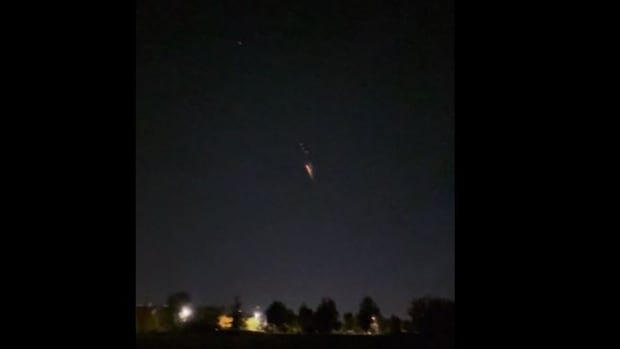Cody Koloski eagerly awaited the northern lights display in Saskatoon on Monday night. As the aurora borealis show began to intensify close to midnight, an unexpected sight caught his attention in the sky. A bright light approached from the west, initially intriguing Koloski. However, his curiosity turned to brief concern as the light grew larger and brighter, sparking thoughts of potential meteor strikes.
The luminous object then fragmented into spinning pieces, leaving a trail resembling orange embers as it streaked across the sky before swiftly fading as it moved eastward. Koloski, astonished by the spectacle, expressed that the video footage did not capture its full magnitude, emphasizing how close it felt.
The mysterious event was later identified as space debris from a SpaceX Starlink satellite re-entry by Samantha Lawler, an astronomy professor at the University of Regina. Lawler explained that Starlink operates over 8,000 satellites, comparable in size to a Ford F-150, in orbit. The debris observed in the night sky was likely from Starlink #1,066, part of a satellite’s re-entry process into Earth’s atmosphere after its five-year lifespan, potentially leaving behind metals with uncertain long-term effects.
Lawler urged residents to report any possible space debris findings to assist in research on megaconstellations’ disposal practices. She emphasized the importance of sharing sky event videos to aid in tracking debris movement and potential impact sites. The professor highlighted that sightings of satellite re-entries in Saskatchewan may become more frequent due to Starlink’s orbital patterns, questioning the sustainability of current satellite disposal methods.
Lawler recommended exploring alternatives to prolong satellite lifespan, reduce satellite numbers, and utilize varied altitude orbits. She emphasized the need for responsible satellite management to prevent excessive debris and environmental consequences.


